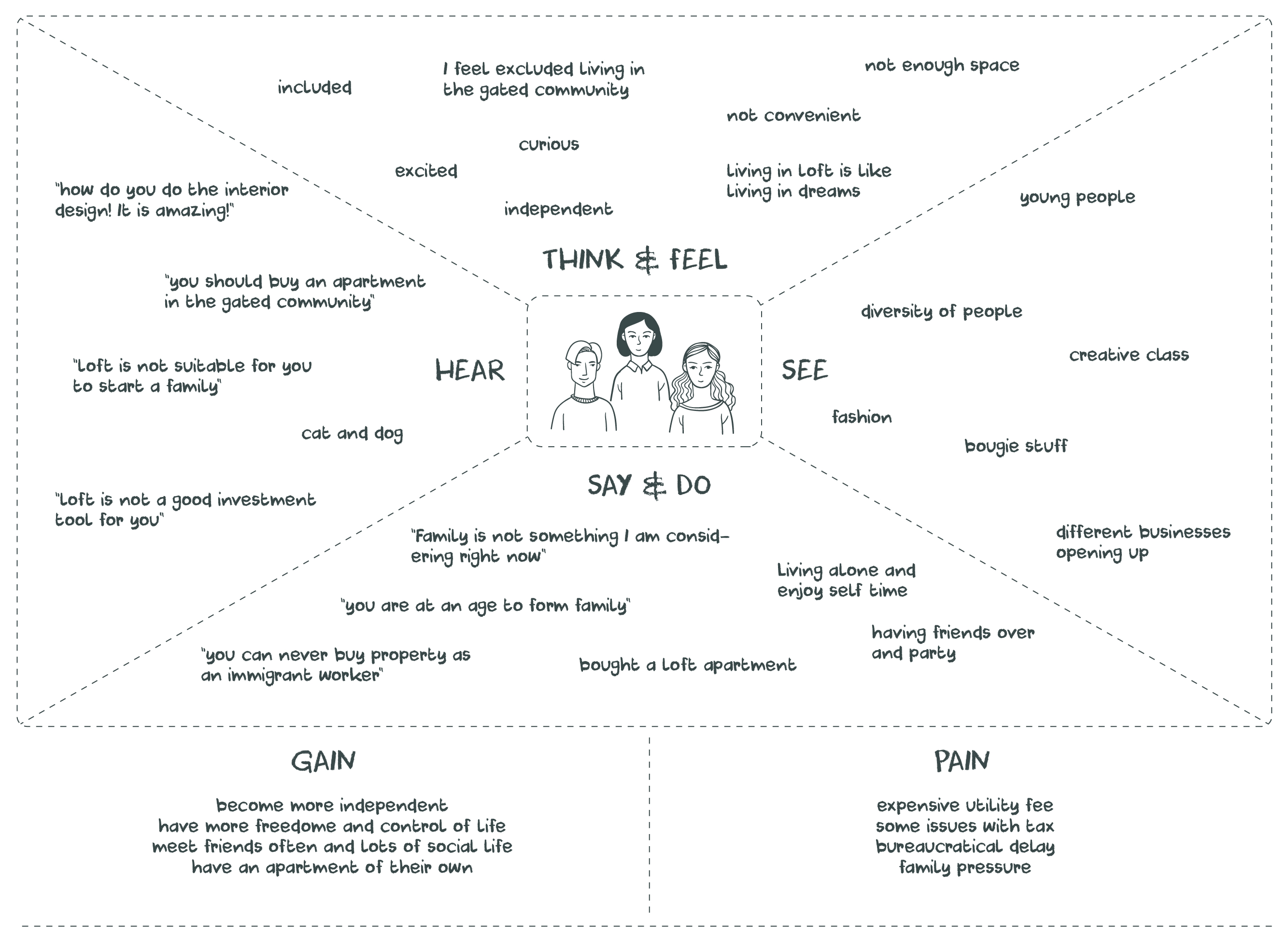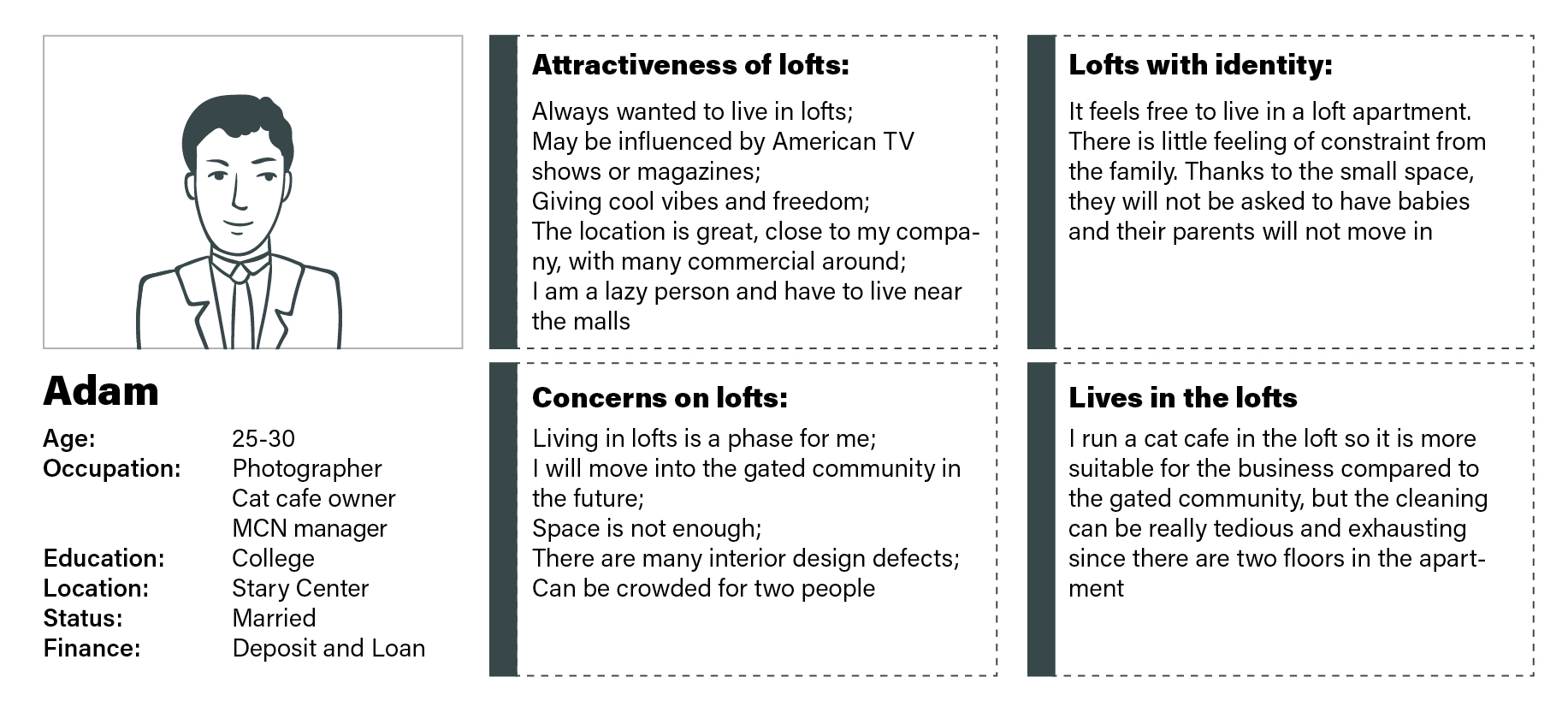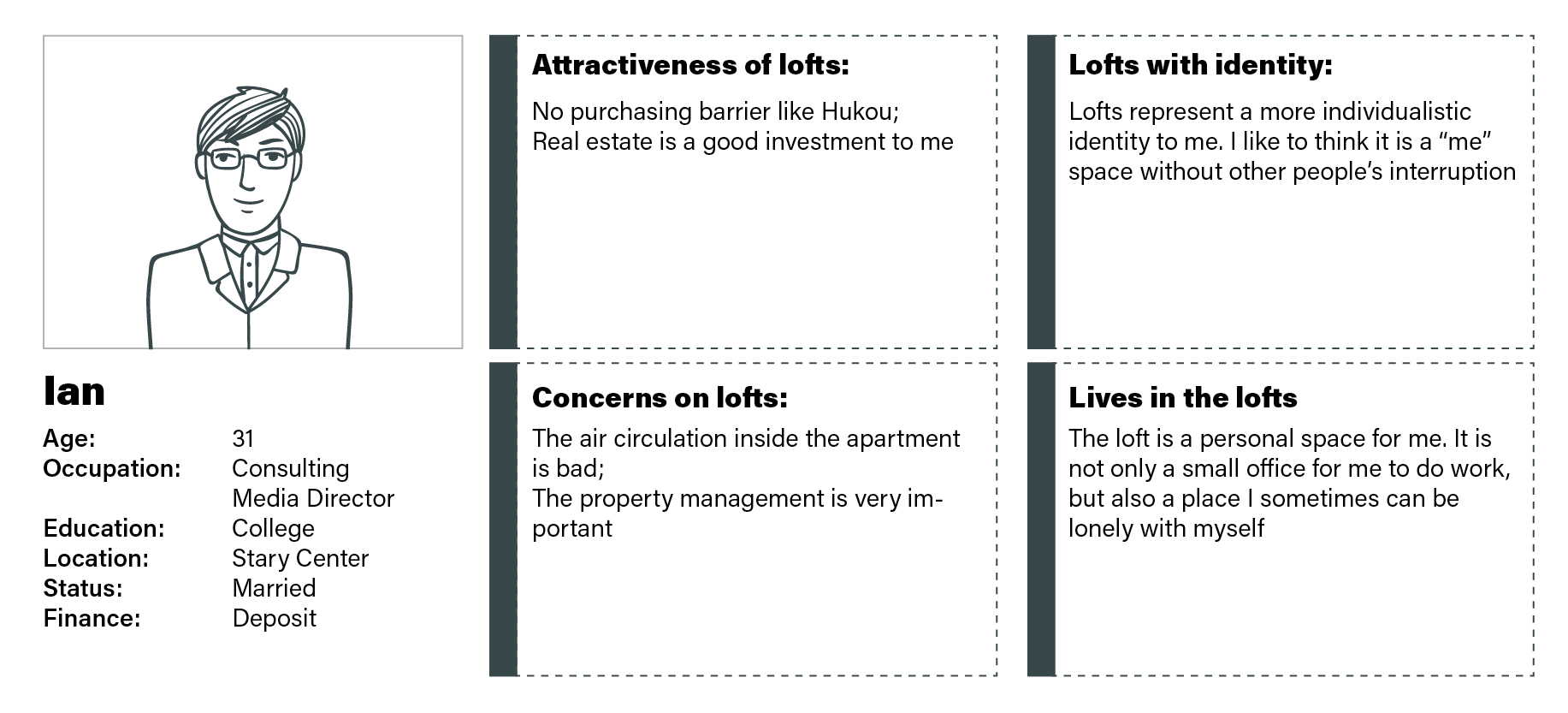Living in Lofts:
Wedging in a feministic, inclusive, and affordable practice
Research focusing on the new type of housing in China. By applying user experience research strategies, I discovered the factors that drive the popularity of this type of housing and disclosed the severe issues of the housing market's status quo.
METHOD: survey, interview, archives, fieldwork, empathy map, persona, journey map
Research Goals
The loft is a new living style for the people in China, especially the younger generation. This research wanted to better understand their difficulties confronted in other housing styles and how loft become a sanctuary for them. Key research questions and areas:
1. What are notable behaviors, preferences, barriers and technologies that impact usage of the admin account?
2. Identify needs and opportunities to inform the product design strategy.
3. Observe and understand users’ current editing processes.
Methodology
4-week field study including three phases of research. Study participants were located in Hangzhou.
For the user survey, a total of 100 participants were recruited. And 15 participants were willing to conduct semi-structured interviews (an average of 45 minutes).

Comparison Studies
Exploration and deep dive were conducted for alternative housing options in the same city.

Survey
Loft residents have a higher rate of female residents. And there are a considerate number of tenants. The younger generation (20-30) is the dominant group.

Guiding Questions
Empathy Map
I translated interviewees' responses into different empathy maps to understand loft living experiences from users' perspectives.

Voices

Personas
I created 5 personas based on the interviews to visualize their opinions, experiences, and behaviors.





Observations
- Loft apartments are usually smaller, and the kitchen space is usually highly narrowed
- There are many single women loft owners or renters compared with traditional apartments
- There are some small businesses in the lofts, such as a cat cafe, manicure salon
- Loft projects are more inclusive to pedestrians, no gated space
- Lots of immigrant workers live or buy lofts
Overall Problems Found
- Lack of
gender-conscious
spaces
-
Lack of accessible and affordable housing options
- Lack of areas that support diverse maverick, non-conforming lifestyles
Discussion: A Gender-Concious and Inclusive Urban Planning and Governance
- Gender-conscious urban planning and governance are very important
- Creative class is essential for city prosperity and the city should embrace the diversity and attract them
- The real estate market should cater to the increasing diversity of people’s choices of lifestyles
- Urban planning and governance should respond to the diversifying of genders and values